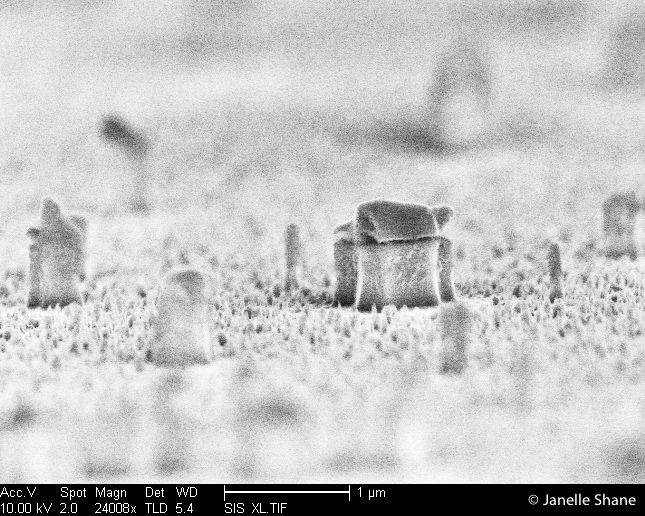(Untitled)

A nanoscale landscape, peopled with little pillars. Each of these would fit easily inside a single cell. They were created out of semiconductor (the same sort that can be made into lasers), when a high-energy plasma ate away everything that wasn’t protected. Each little pillar has a cap on top (in this case, a randomly-deposited fleck of grit) that protected it from the plasma.
We use this same principle when we make pillar-shaped nanolasers - in that case, we artificially make the caps using a process called electron beam lithography, so we get a regularly spaced grid of uniformly-sized pillars. The tendency of dust to turn itself into pillars during etching is one reason why we do nearly all our processing in the cleanroom, where there’s orders of magnitude less dust.


